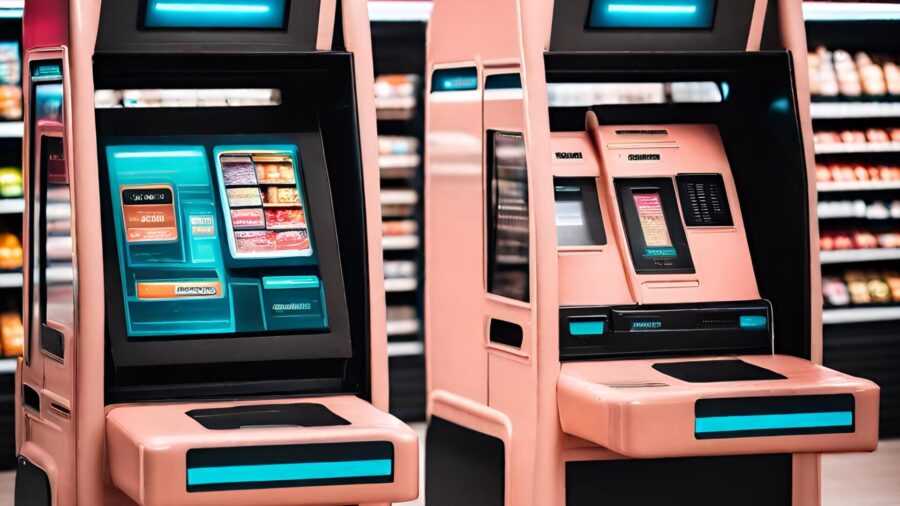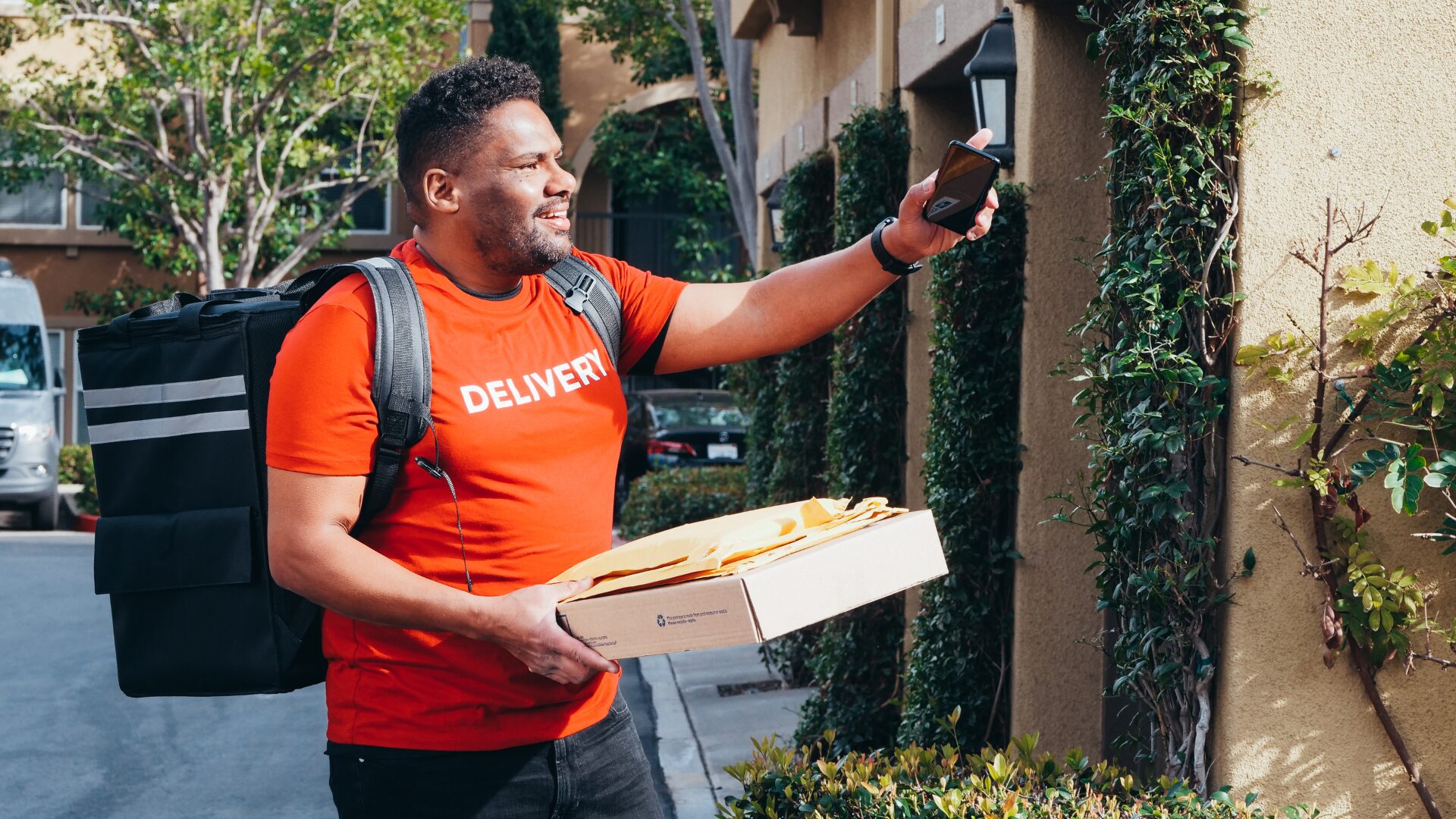If store managers had a crystal ball for 2024, seeing self-checkout as a cultural battleground might have been written off as operator error. But crystal balls aren’t supposed to fail, and neither are people when left to pay for their own products, yet here we are. There is no Groceradamus prognosticating the future of F&B, but the next best (and arguably more accurate) source is data. And there’s quite a bit of it.
The GDP report from last week was promising; the domestic GDP grew 3.3% in the fourth quarter, solidifying a solid (though still absolutely wild) year for American consumers and the brands they support (or abandon – just ask Anheuser-Busch how their year went). But people are spending money, and though food prices remain high for most consumers – and top-of-mind as well – there is much to anticipate in the year ahead.
Retail Therapy Has Never Been Less Therapeutic
First, despite promising national numbers and low jobless rates for an on-paper thriving economy, most average consumers still stress about buying groceries. A recent report from Food Technology revealed top consumer trends in that regard were comfort spending and making tough decisions about what and how much to put in their carts.
“Food and beverage prices are high,” said Amy Marks-McGee, founder of Trendincite, in the report. “Consumers are much more budget-conscious, and those higher prices impact their behavior.” Most consumers are spending about 30% more on groceries today than five years ago, for example, far outpacing inflation, and one in five expect their financial situation to worsen in the future.
A promising economic outlook, in other words, simply does not matter for most consumers. And even if it did, most consumers don’t think rationally about inflation anyway, according to the Snickers theory via The New York Times. Almost 3/4 of consumers believe inflation is still raging at the grocery store, according to a recent Axios Vibe Check survey of over 2,100 adults. A further 60% of respondents feel “angry, anxious, and frustrated” whenever they shop due to the impact on their budget.
There’s also an interesting feedback loop occurring in American consumerism – the tighter the budget becomes, and the more stressed people feel, the more demands they have regarding how they’d like to be accommodated while shopping. That’s according to a recent report from 84.51°, which revealed some wild numbers regarding that age-old rite of budget and meal planning – coupon-clipping:
- Over 71% of consumers desire universal coupons to use across different retailers
- Over 70% want those coupons to be personalized and digital
- Over 52% desire free grocery delivery
- Over 50% want personalized paper coupons to pick up in-store
Several other economic factors also lead to stress at the grocery store. In a recent message to the Wisconsin Bankers Association’s Wisconsin Economic Report, Wisconsin Grocers Association (WGA) president and CEO Brandon Scholz said grocery prices will remain high while self-checkout and even robots will continue to take over the store floor, noting that inflation rates are still “crushing” food and grocery prices despite inflation abating to around 3%. He also cited higher labor and energy costs as another mitigating factor in stocking shelves and consumers’ carts with goods and food they want, not just the commodities they need.
“Here’s the kicker,” he said, “consumers expect prices on the shelves to decrease accordingly when they hear reports that inflation has subsided back down to ‘normal’ levels. That’s not going to happen anytime soon,” adding that no “magic formula” (or crystal ball) exists that indicates a direct relationship between food prices and inflationary reductions.
The USDA, in fact, projects grocery prices to increase by another 1% this year, propagating another contentious experience in retail and grocery: self-checkout.
Is Self-Checkout the New Terminator?
Media theorist (and retail futurist?) Marshall McLuhan once wrote, “We shape our tools, and thereafter our tools shape us.”
James Cameron put it another way decades later in Terminator 2, delivered by an Austrian-accented cyborg made by a corporation intended to make life easier: “It’s in your nature to destroy yourselves.”
In other words, and as McLuhan stated and Cameron reiterated, people are flawed. And because of that, many of our tools are, too, and when flawed tools appear in the retail and grocery markets, consumers bristle. In today’s brand-agnostic foodscape, a little bristle might mean a lost customer. For many, brand loyalty goes out the window during tough times.
Much has been written this year on self-checkout. During his speech, Scholz touched on this, adding that high food and labor costs lead to diminished staffing and workforce, whether at a local grocer or super retailer across all 50 states.
“Without a full workforce, empty checkout lanes will be converted to self-checkout stations and shoppers may start to see robots in the aisles working on stocking and inventory,” he said, adding that automation in the grocery industry “has the potential to become a new normal.”
“Self-checkout is a part of the technology journey consumers and retailers are on, but it’s not the destination,” said Andy Keenan, executive vice president and general manager at Advantage Solutions, to The Food Institute.
“It will all come down to consumer adoption, and as the technology advances, consumers should respond. Despite the well documented challenges, the number of self-checkout lanes has increased by 10% in the last five years. And nearly 40% of checkout lanes across U.S. grocery are self-checkout [source: Catalina]. I would expect consumer adoption to continue increasing over time as retailers embrace new technology and tools to offer efficiency.”
For many, the promise of self-checkout “has just not materialized,” said Brian Brinkmann, chief product officer at Agilence, to The Food Institute (Agilence is a loss prevention analytics provider in grocery, restaurant, and retail).
Nonetheless, Brinkmann agrees that we’re only in phase 1 of contemporary self-checkout; though it’s been around for decades, the pace of technology and the changes in how people acquire goods and groceries has evolved at such a rapid pace that many consumers get overwhelmed because their experience hasn’t adapted; machines do what they’re programmed to do.
People, not so much.
“Self-checkout is likely not going away particularly in this tight labor market, but more improvements, process, and technology are needed to achieve the promised benefits.”
In the meantime – and until both the technology and the people using it evolve – Brinkmann suggests simplifying self-checkout for items that make sense: no produce, no proteins, no alcohol, no manager visits to unlock the machine. Until stores or the people within them are willing to do so, however, those long lines and residual frustration may continue.
But will self-checkout be terminated entirely? Doubtful. The pace of technological evolution today is like nothing the industrial and consumer worlds has ever experienced.
In the words of the T-1000, “[It’ll] be back.”
The Robotic Revolution Isn’t Coming – It’s Here
As for robotics in grocery and retail, look no further than The Food Institute’s extensive video and interview coverage of CES 2024:
From floor-cleaning automatons seen at Sam’s Club and other retailers to ADAM, the drink-making robot from Richtech Robotics, The Food Institute was on the floor at not only CES 2024 but also the Specialty Food Association Winter Fancy Food Show in Las Vegas, garnering interviews with leaders in robotic innovation as well as hot interviews with retail and grocery leaders such as Harvey Ma, vice president of Albertsons Media Collective, to discuss their partnership with Criteo, the growing demand for retail media networks, and consumer behavior before and after COVID.
The New Year (and new future) of retail is here. The more store managers and consumers believe they know about the new-look foodscape, the more it’s bound to change. Remember what Kyle Reese said about 40 years ago in the original Terminator:
“The future is not set – there’s no fate but what we make for ourselves.” The tools (McLuhan) and tech (Cameron) we’ve made thus far are pretty impressive – be sure you’re prepared for it.
The feature image was created using AI. The text is original.










